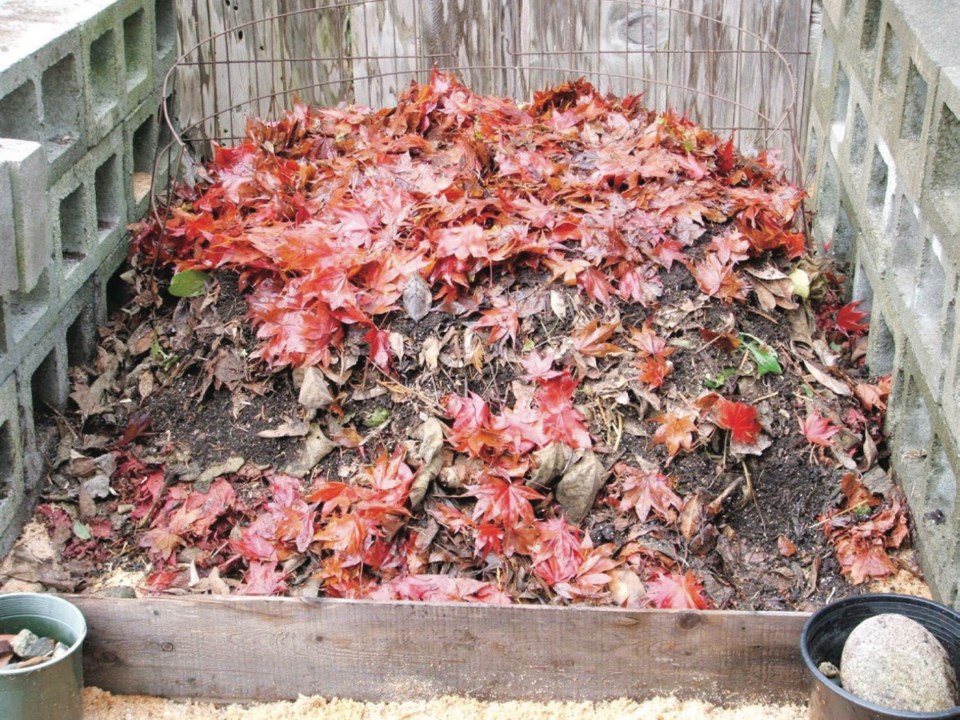Dear Helen: What fertilizers do you use? When and how often do you use them?
B.G.
Since the early 1980s I’ve used only organic type fertilizers — fish and seaweed solutions for transplanting, and natural-source, slow release materials for preparing plots for planting and for adding to container soil blends.
I realize that’s not what many people do. There are “main-stream” chemically treated fertilizers for just about every category of plant as well as all-purpose ones such as 6-8-6. The label numbers represent the relative amounts of nitrogen (N), phosphorus (P) and potassium (K) — three major plant nutrients. Labels on these products recommend the amounts and frequency of application.
I rely mainly on a soil generously supplied with a nourishing compost for plant health and productivity. In getting plots ready for planting I also mix in about a large handful over every square metre of a natural-source fertilizer I mix myself, with products I find at some garden centres and farm supply stores.
For the nitrogen I use seed meals such as alfalfa, canola, and/or cottonseed. Lime, dolomite or calcium carbonate ("marking” lime), counters the seed meal acidity. Bone meal and/or rock phosphate supply phosphorus, and kelp meal supplies potassium along with many trace minerals.
I experiment often with various formulas. Currently, this is the one I am using:
4 parts (by volume) seed meals
1 part lime
1/2 part bone meal
1/2 part soft rock phosphate
1 part kelp meal
These natural-source plant food mixtures release nutrients over three to four months. I use them at planting time, with no further applications. I add them to soil mixtures for container tomatoes, peppers and flowers and don’t give the containers any follow-up fertilizing except for the patio tomatoes, which I feed with a dilute fish and seaweed solution in July.
Ready-mixed blends of these natural-source fertilizers are available. Two brand names are Gaia Green and Reindeer. I buy the odd bag, my most recent purchase being an all-purpose organic fertilizer by Reindeer’s Natural Plant foods.
Dear Helen: What should we do with the leaves we placed around plants in the fall? We’ve been told they need to be removed before we top-dress the bed with compost. The leaves are fairly large and haven’t broken down completely. If you put leaves down on plots for the winter, I’d appreciate your views on what to do with them in the spring.
J.F.
Neighbours across the street give me bags of leaves, mainly small maple leaves, in the fall. I use some in compost heaps but spread most of them over emptied vegetable and annual flower beds
In the spring I rake the leaves off areas I want to prepare for planting. Some go in shallow layers into compost heaps, but I bag most of the dried leaves and set them aside for use as a heat-deflecting, moisture-retentive mulch layer around vegetable plantings in summer.
If your large leaves have dried but are not broken up, consider spreading them on the lawn and going over them with a mower. The resulting mix of brown shredded leaves and green grass clippings would be an ideal mulch around vegetables and ornamental plants that are most stressed by drought conditions. Rhubarb, tomatoes, and garden phlox come to mind.
Dear Helen: Is it true that horseradish is a good plant to have in the garden for its pest repellent, medicinal, and culinary usefulness?
T.W.
For many centuries horseradish has been made into a popular condiment, as in horseradish sauce to go with roast beef. It has also been used, internally and externally, for medicinal purposes.
In the garden, common leaf-eating insect pests stay away from horseradish because of its hot, peppery taste. Some gardeners have found horseradish to be a valuable companion to potatoes. One plant at each corner of a potato patch is said to enhance the general health of the potatoes.
A warning: Horseradish can quickly become a highly intractable weed. Every little bit of root left in the ground will sprout into a plant. Solutions are to plant in large, deep pots or to dig up the roots every mid to late autumn. Keep them in damp, cold storage for use in winter and replant the number of roots you want in the spring.
Online gardening help. Linda Gilkeson is making her Year-Round Harvest gardening course slides and information free to the public. Go to her website: lindagilkeson.ca and click on “Course Login.” Use the password honeycrisp to open four course segments already available.



